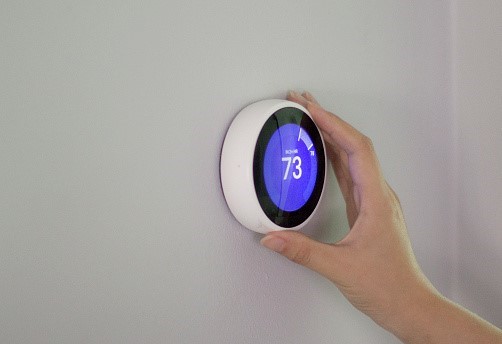Choosing the right smart thermostat for your home might seem confusing; which is right for your home? Are they different than programmable thermostats? Let's answer those questions now and tell you about some smart thermostat features that allow you to save money by using less energy!
Programmable Thermostat vs. Smart Thermostat
A programmable thermostat allows you to decide the temperature of your house for each day of the week and program different schedules for the week versus weekend. You plug in inputs that tell your HVAC system to run on a set schedule, typically based on times you will not be home and do not want to unnecessarily heat or cool your home. A programmable thermostat is not “smart” because it is unable to automatically adapt to your schedule and will only perform what you have programmed it to do. It is not connected to Wi-Fi so changes to your schedule will not be reflected in your heating and cooling schedule.
A smart thermostat is Wi-Fi-enabled and can automatically adapt to heating and cooling schedules based on your daily patterns. For example, say you return home from work around 5:00 p.m. every day. A smart thermostat can track this behavioral pattern and begin heating and cooling your home accordingly so that it is at the desired temperature when you get home.
Say that you forgot to update your programmable thermostat before going on a week-long vacation. It will continue to heat and cool the house according to how it has been programmed. A smart thermostat, on the other hand, has sensors that will notice the home is not occupied and can avoid heating and cooling your home unnecessarily.
Also, since smart thermostats are Wi-Fi-enabled, you can control the temperature and schedule when you are not home by using an app on your phone or computer. For example, if your week-long vacation gets cut short, you can notify your thermostat to resume your regular schedule so your home is comfortable by the time you arrive.
Smart thermostats often have smart home capability and can connect to other systems such as Amazon Alexa, Google Assistant, and Apple HomeKit. Shop for a smart thermostat at the FOCUS ON ENERGY® Online Marketplace and see what systems they are compatible with! When shopping for a smart thermostat on the Focus on Energy Online Marketplace, scroll to the bottom of the page to compare pricing tiers and features.
If you prefer to shop at a retailer, you can also check to see what models are eligible for a Focus on Energy incentive.

Key Features of Smart Thermostats:
Occupancy Sensors: Some smart thermostats have occupancy sensors to determine when to heat and cool the home or even specific rooms in the house when paired with a zoned HVAC system.
Geofencing/ Geolocation: Smart thermostats can use your phone’s location to determine if and when you are away or near and when to heat and cool the home.
Voice Control: Some smart thermostats have voice-enabled systems that can respond to commands using voice assistance through Amazon Alexa, Google Assistant, or Apple’s Siri.
C-wire (Optional): Some older HVAC systems may not have a C-wire, or common wire, that provides power to the thermostat. There are some smart thermostats that do not require a C-wire or that have optional adapter kits to provide power to the thermostat when a C-wire is not present. However, C-wires are typically recommended to improve Wi-Fi connectivity. If you think your system may require one, you can learn more about C-wires.
Energy Tracking: Some smart thermostats can track your energy usage and note what times of the day you are using the most energy. If your utility provider offers Time-of-Use (TOU) rates, this information can help inform when you adjust the temperature of your home to result in more savings.